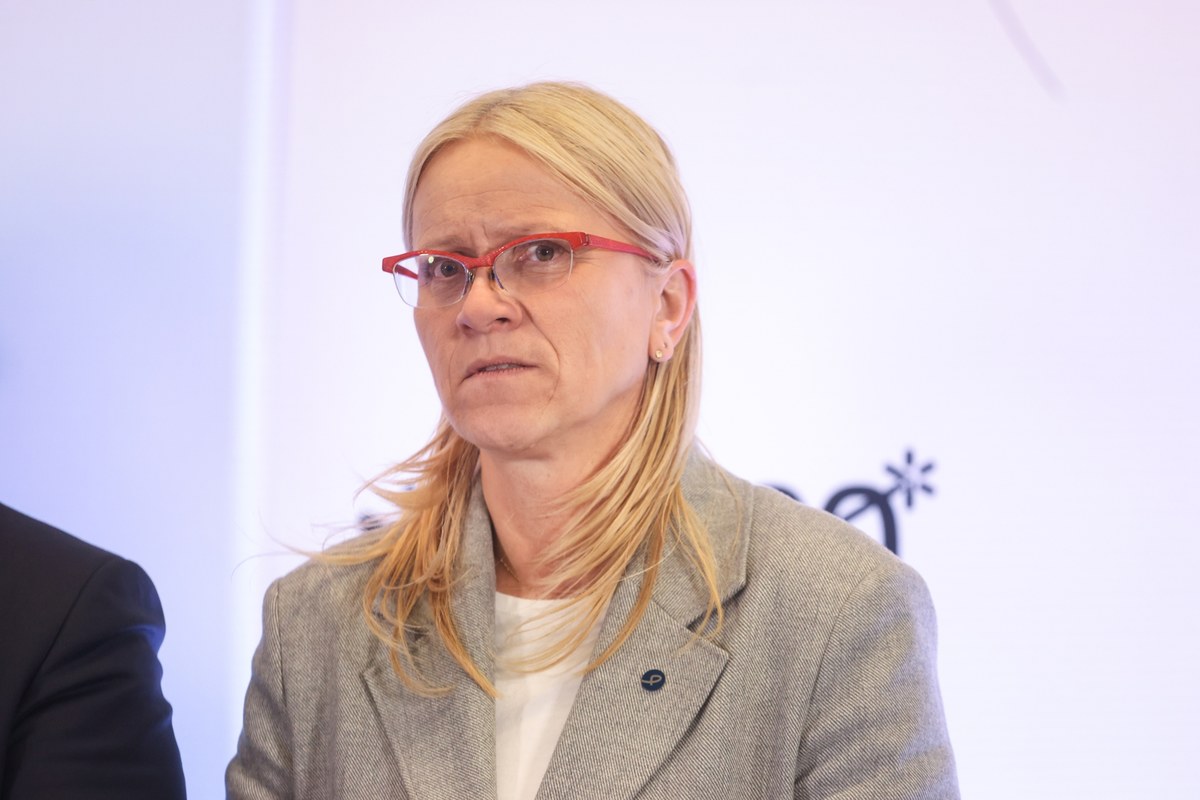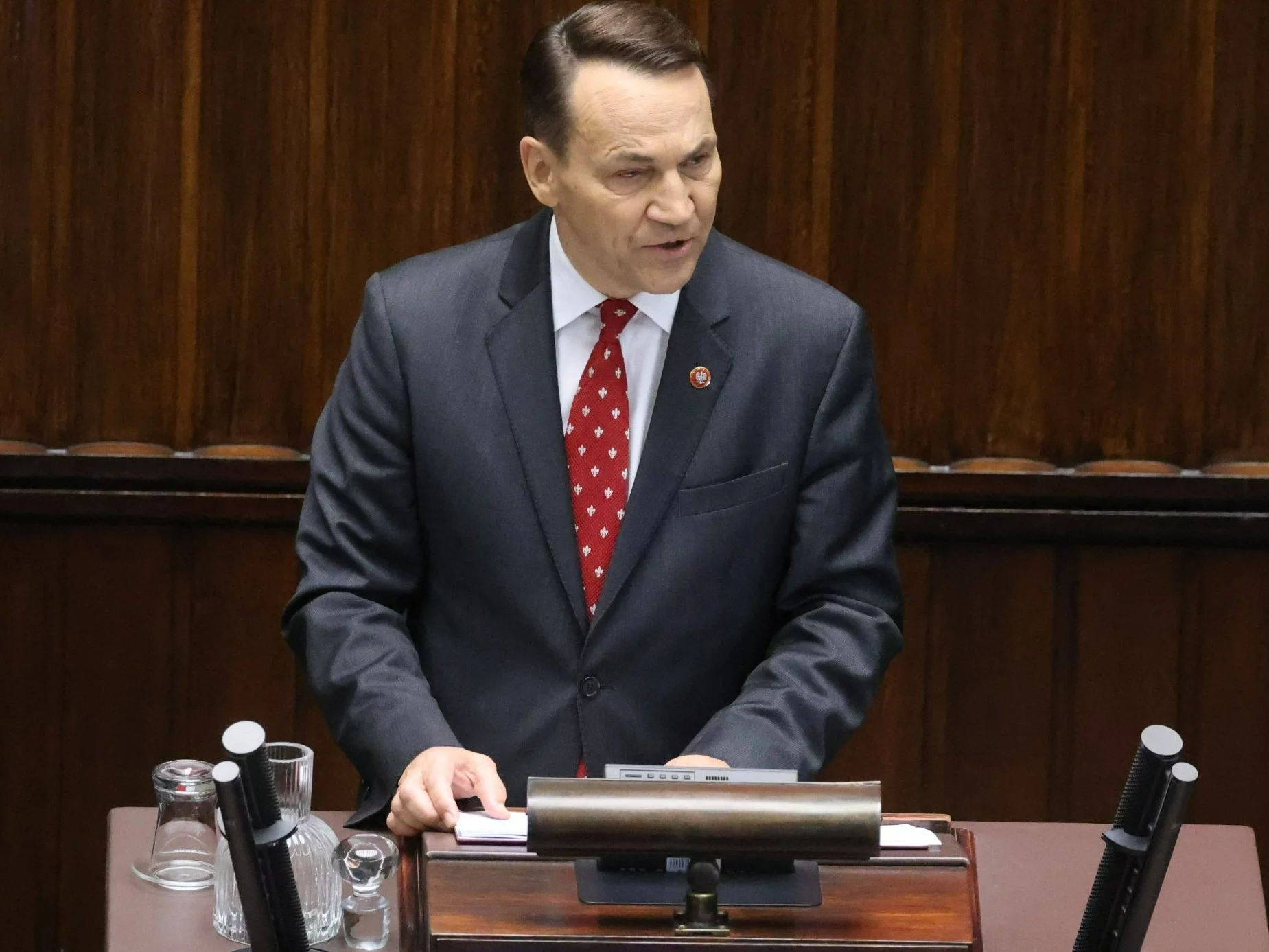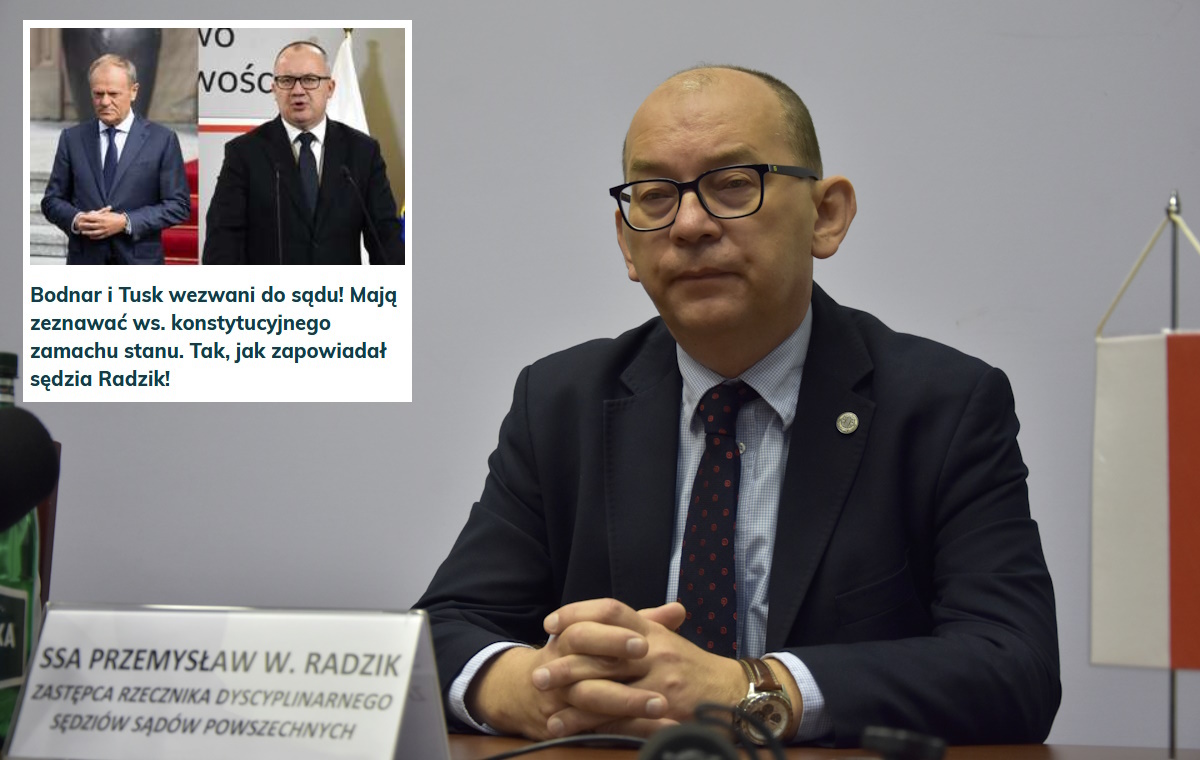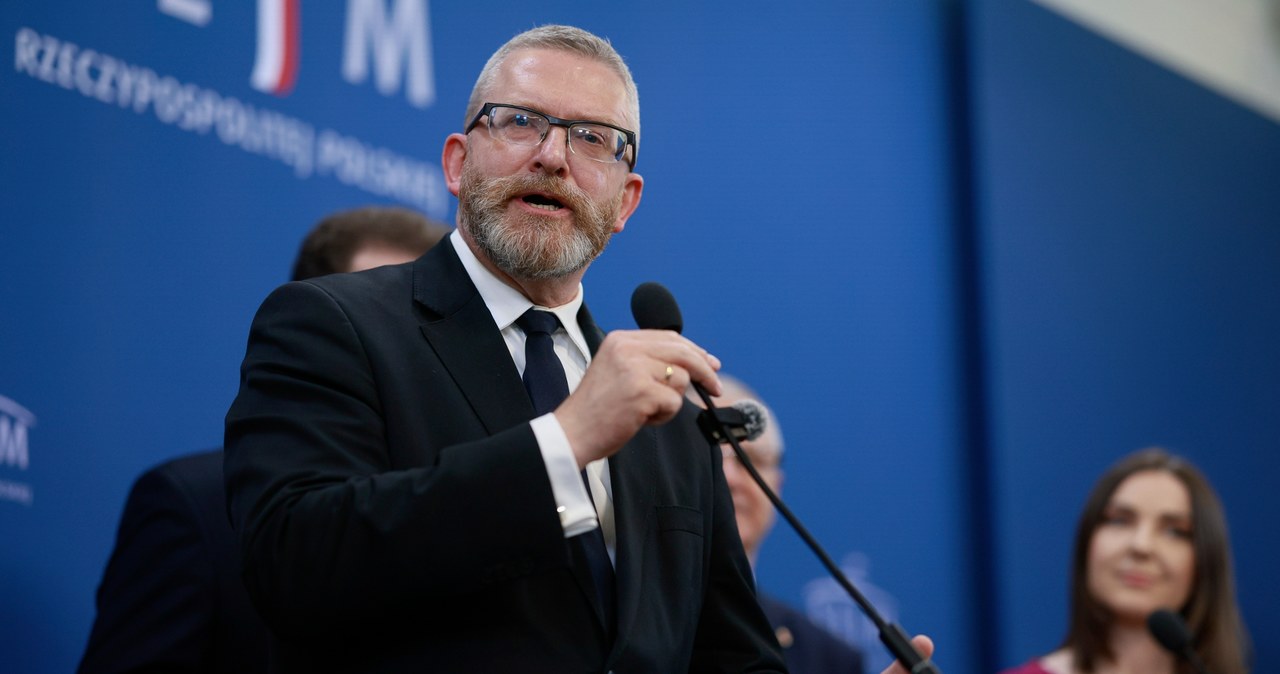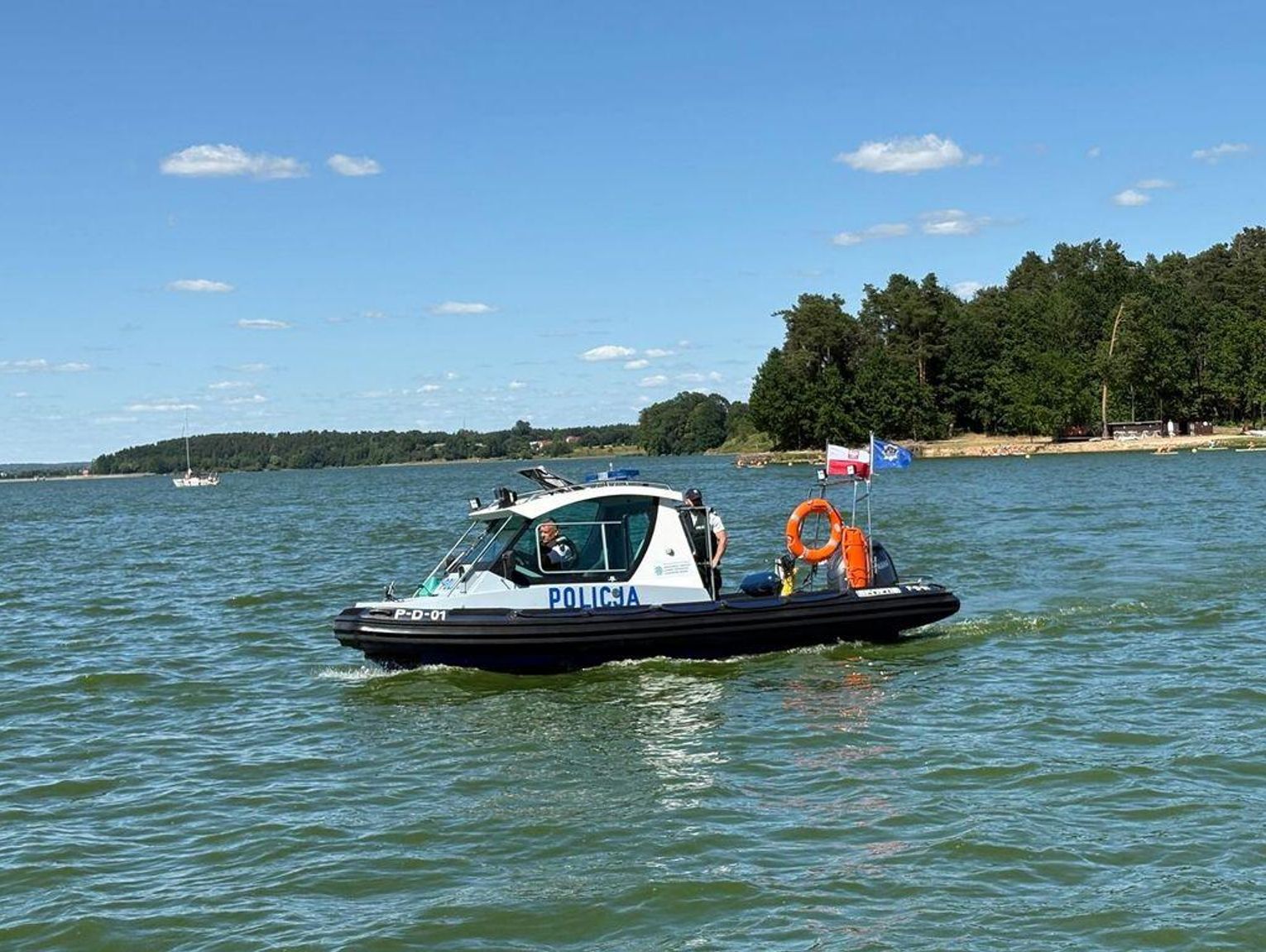The large Poland Camp was created during a period of peculiar political tensions, responding to the taking over of power by the sanction after the May 1926 bombing. Roman Dmowski then saw the request to make a movement that will not only counterbalance the authoritarian power of Józef Piłsudski, but will besides become a tool for rebuilding the national spirit in society. OWP was not expected to be a classical political organization – its ambition was to form a fresh national elite.
The inspiration for Dmowski was abroad experience, especially from Italy ruled by Mussolini. However, already at the creation stage, the leader of the OWP made it clear that fascism is only a transitional model:
"We had fascism before our eyes erstwhile we formed Camp. [...] present it can be said that a strategy of governments modeled on fascism is good for a short time to decision from it to another."
The intent of the OWP was not so much to participate in current parliamentary disputes as to rise the public in a national spirit and prepare it to take over:
"The Camp of large Poland is not a political organization in the usual sense of the word. It is simply a national organization designed to rise society in the spirit of national ideas."
The organization was established during a reunion in Poznań, 4 December 1926. It brought together representatives of the People's-National Union and another right-wing communities. Dmowski himself saw the OWP as a long-term construction, oriented towards rebuilding the Polish state on the basis of national and Catholic values:
“The main task of the Camp of large Poland is to rebuild the Polish state in a national spirit based on strong moral and social bases.”
Thus, OWP from the beginning had the features of the ideological movement – elite, hierarchical, and at the same time mass in the ambitions of influence. This movement grew out of the national-democratic tradition, but it was already a fresh installment of it – a more radical, dynamic and better adapted to the era of the crisis of liberalism and parliamentary democracy.
Idea and program
The ideology of the Camp of large Poland was the consequence of the intersection of the main streams of national thought with elements of conservatism, social Catholicism and abroad inspiration – especially Italian fascism and French integral nationalism. OWP was to become an ambition not only a political, but besides a spiritual-moral organization – a tool for raising the nation and rebuilding the state on the foundation of national unity, discipline and strength.
The central thought was to organize a nation as a whole, integrated around common values. Dmowski perceived the nation as "a body capable of 1 thought and acting according to 1 plan" – he so advocated moving distant from liberal democracy and political pluralism. In the political model of the OWP the strategy was to be based on the leadership of the national elite, chosen not by vote, but by "spiritual and intellectual values".
“A fewer people who know what they want, and who are experiencing a passive mass of spiritual values [...] have the moral right to impose their regulation on the general public,” wrote Stanisław Kozicki, a close associate of Dmowski.
The OWP policy programme is formulated in respective key brochures: Government Issues (Dmowski), Policy and Farm (Ribarski), Rule of law (Vasiutine), Foreign policy (Berezowski). Their common denominator was the belief that the Polish State must be rebuilt in a national spirit – as a tool for the national community, not simply a legal structure.
The OWP advocated strong executive power, limiting the function of parliament and introducing elements of the social hierarchy. The strategy model was to be functional, centralised, devoid of organization fighting and decision-making distraction. In the field of ideas, the OWP attached large importance to Catholic religion as the “moral backbone of the nation” and the basis for the upbringing of young generations. A close relation between the Church and the State was advocated while maintaining formal freedom of conscience.
The ideology of the OWP was so comprehensive: political, religious, social and cultural. It was a consequence to the crisis of the democratic system, but besides a task of a comprehensive reconstruction of the state and nation – in a spirit of unity, order and responsibility.
The Camp of large Poland was designed from the beginning as an elite organization, with a well-defined structure and interior discipline. Roman Dmowski and his colleagues rejected the typical expression of the political organization for the national movement, which was to form the future elite of power and form social masses.
The OWP was headed by the Grand Council, chaired by Dmowski himself as the “Big Camper”. This body besides included Tadeusz Bielecki and Roman Rybarski. The full organization was divided territorially – into districts, districts and circles – with a clearly defined hierarchy and command line. This structure was not only to guarantee the efficiency of action, but besides to rise members in a spirit of obedience, work and national community.
The characteristic feature of OWP was rich symbolism, inspired by both the past of Poland and contemporary organizational patterns. Uniform uniformation was introduced: sand shirts (or jackets), navy trousers and berets. The distinguishing sign became the sword of Chrobry, which symbolized the strength, courage and continuity of tradition. Roman greetings, modeled on Italian fascists, were besides utilized to emphasize discipline and unity.
A peculiar place in the structure was occupied by the Youth Movement, which over time dominated the activities of the full organization. Although originally the OWP was not expected to be a youth organization, it was young activists, frequently from the Association of Academic Youth of All Poland, who gave it the top dynamics. The Young Movement had its own badge, anthem ("Hymn Young") and reunions, the first of which was held in Lviv as early as 1927.
The OWP symbolism served as an integrative and mobilizing function. It was besides a form of communication of ideas – a strong visual identity strengthened the thought message and distinguished the organization from another political movements. In combination with the hierarchical structure and consistent training of members, OWP was made a modern organization, for the reality of the Second Polish Republic – and at the same time powerfully embedded in the national and Catholic tradition.
Economic and systemic visions of the Camp of large Poland were 1 of the most crucial aspects of its program, showing the drive for a deep reconstruction of the state – not only in political terms, but besides in social and economical terms. A strong, centralised national state, capable of active intervention in social and economical life, was characteristic of the OWP.
The OWP clearly distanced itself from the liberal-democratic model. In the opinion of Dmowski and his colleagues parliamentary democracy led to anarchy, dissipation of work and demoralization of public life. In return, a strategy based on hierarchical principles, eliteism and national ethos was proposed. The executive power – the president or the government – was to be strong and effective, supported by the organization of the nation, not by variable organization arrangements.
Dmowski wrote:
“The nation is the origin of power, but until it is organized, its power is illusory. So we must organize a nation – make it a body capable of 1 thought and acting according to 1 plan.”
The organization of the nation was to replace political parties and seismic particularism. The centre of the task was the national – spiritual and intellectual elite, whose mission was to lead the masses.
Two competitive economical visions existed in the OWP. On the 1 hand, Roman Rybarski represented the liberal-conservative trend, advocating the free marketplace economy and the limited function of the state. On the another hand, the younger generation of nationalists, especially those associated with the Young Movement, postulated the social-corporate model, inspired by, among others, the Italian concept of the 3rd road.
This concept provided for the integration of employers and workers within manufacture corporations, mediating social interests and avoiding class conflicts. The State was to service as an arbitrator and organizer of economical life – not as an owner, but as a guardian of national order.
This dispute has not been full resolved, but shows the interior intellectual viability of the OWP. Regardless of the differences, the common denominator remained the belief that the economy must service the nation – not capital or social classes.
Organisation
The Camp of large Poland, despite its elite concept and perfect character, managed to attract a wide scope of supporters, mainly from average and intelligent layers. The social base of the organisation was diverse, but combined with a common denominator: a sense of national mission and opposition to sanctioning governments.
The most crucial group on which the improvement of OWP was based was academic youth. In university environments, especially in Poznań, Lviv, Warsaw and Vilnius, OWP found susceptible ground for its ideas. The Association of Academic Youth of All Poland has played a peculiar role, from which most leaders of the Young Movement – the most dynamic faction in the OWP.
Young members of the organization, frequently disappointed by the ineffectiveness of parliamentary and passive elder elites, sought space in the OWP for action, discipline and perpetuity. On their initiative, the symbolism of movement was born, among others: uniforming, anthem, badges – and intensive formation and public activity. The first Young Movement convention was held in 1927 in Lviv, and its leaders – Zdzisław Stahl and Tadeusz Bielecki – became the faces of national activism.
Apart from academic backgrounds, OWP enjoyed the support of intelligence, teachers, lower officials and middle-class representatives, especially in regions specified as Wielkopolska, Pomerania and Silesia. In these areas, the popularity of OWP active strong national traditions and distrust of the thought of sanitation centralism.
Despite efforts, Camp failed to full integrate the working class and peasantry, although attempts were made to organize them through local educational structures and activities. The barrier was not only the competition of the folk and socialist movement, but besides the image of the OWP as an “intelligent” and morally demanding organization.
The social base of the OWP thus shows an organization that, despite its elite core, was able to influence crucial segments of society, offering a imagination of an organized and strong nation. Her mobilization force, especially among young people, was 1 of the reasons why the HR began to be regarded as a serious political challenge.
Relationship to national minorities
One of the most controversial aspects of the activities of the Camp of large Poland was its attitude towards national minorities, especially Jews, Germans and east Slavs. In accordance with the thought of building a national state, OWP advocated a model in which Poland was to be an ethnically and culturally uniform state, alternatively than a multi-national mosaic inherited from the partitions.
At the heart of the criticism of the OWP was the judaic community, which was blamed for economic, financial and media dominance. Passwords of limiting the influence of Jews, and in more extremist versions – their full exclusion from public life, appeared in declarations and organizational leaflets. Among another things, there was a call for numbers clausus at universities, a boycott and exclusion from state institutions. This kind of action and rhetoric has sparked both support and strong opposition – especially among liberal and leftist communities.
With respect to Slavic minorities – primarily Ukrainians, Belarusians and Rusins – OWP advocated cultural polonization, but did not presume their elimination from public life. The main goal was to gradually integrate these communities into the orbit of Polish culture and national loyalty. They were thus distinguished from “cultural aliens” specified as Germany and Jews.
A peculiar place in OWP rhetoric was a German threat. The organization saw not only the problem of the German number in Poland, but besides the long-term danger associated with the presence of Prussia and the policy of German revisionism. Ideical papers formulate the goal of "recovery" of lands considered indigenous Slavic – advanced and Lower Silesia, Pomerania, Lubuskie land, and even Warmia and Mazury.
Conflict with sanctions and repression against the Camp of large Poland
Since the very beginning of the Camp of large Poland was on a collision course with the ruling sanatorium camp. The formation of the organization in 1926 was a consequence to the May bombing and the takeover of power by Józef Piłsudski and his supporters. OWP, as an anti-sanction formation, collected and formed an perfect opposition, making it a threat to power that did not tolerate independent, mass political movements.
The first repression came in May 1927 erstwhile 15 leading OWP activists were arrested. In October of the same year, the State Police Directorate suspended the operation of the OWP structures in Lviv and Małopolska, recognising it as an “settling to the interests of the state”. Despite this, the camp's activity continued – it developed especially in Wielkopolska, Pomerania, Silesia and academic centres.
1932 brought an escalation of repression. Only 150 lawsuits against members of the OWP were conducted in Wielkopolska. The accusations concerned, among others, the dissemination of leaflets, the organisation of illegal gatherings and the "inspiration of social excesses". The repressions were pointy, but consistent – they consisted of both police repression and administrative action (resolution of local structures, censorship, force on officials and teachers).
Sanitation authorities clearly feared the impact of OWP on youth and mediate class, as well as the increasing radicalisation of passwords in the Young Movement. any activists, failing to accept organizational inactivity, began to decision towards creating more extremist structures, as the later National-Radical Camp (ONR).
The final blow came on 28 March 1933, erstwhile the OWP was disbanded by a decision of the authorities, pursuant to Article 16 of the Law on Associations of 1932. The authoritative message of reasons states:
"contrary to the penal code and orders of the state authorities by constantly inspiring excesses and disorders, fueling organization and racial hatred, holding demonstrations and gatherings with a clear intention to incite the population against state authorities."
However, the solution of the OWP did not mean the end of the national thought – on the contrary, many of its activists continued to operate in the structures of the National organization or future national-radical organizations. The conflict with the sanction was recorded in past as a clash of 2 competing visions of Poland – 1 based on the authority of the state, the another based on the primacy of the nation.
Heritage and reception of the Camp of large Poland after 1933
Although the Camp of large Poland formally ceased to be in March 1933, its ideas, structures and staff survived in various forms and imprint their mark on Poland's past until today. The legacy of the OWP should be considered in many respects – politically, organizationally, ideologically and symbolically.
The direct continuation of many ideas and staff of the OWP was the National Party, which since 1928 took over the function of the main carrier of national thought. Many members and leaders of the OWP strengthened its ranks, continuing to work on the organisation of local structures, youth training and promoting the national-Catholic model of the state.
In the 1930s, the influence of the OWP Youth Movement on the creation of the National extremist Camp (ONR) was clearly visible – a more radical, revolutionary branch of the national movement. Symbolics, language, structure and postulates of ONR drew straight from the OWP's achievements, although they were further towards the national revolution and authoritarianism.
After planet War II, under PRL conditions, the past of OWP was almost completely erased from the authoritative discourse. The organization was presented unequivocally negatively – as nationalist, anti-Semitic and reactionary. It was only after 1989 that there was a anticipation of a more nuanced debate on its importance. any academic and publicist environments began to re-examine the achievements of the OWP, separating the ideological layer from the social context and trying to realize the phenomenon of movement from a historical perspective.
Today, OWP symbols – specified as the Chrobry sword, sand shirts or the “Young Hymn” – are utilized by any national organizations, although their explanation can be selective. The legacy of OWP is besides an example of social mobilisation, youth formation and the construction of a modern organizational structure. Regardless of the ratings, this movement played an crucial function in shaping the face of the Polish right of the 20th century – its echo can be found in the language, symbolism and aspirations of many environments besides today.
Although there were only a fewer years, the Camp of large Poland left a clear trace in the political past of the Second Republic. It was an exceptional movement – combining elite ambitions with mass influence, idealism with organizational practice, and national conservatism with modern formation methods. His creators, with Roman Dmowski at the head, wanted to make a fresh quality in Polish public life – based on national unity, Catholic values and organizational strength.
The ideology of the OWP, rooted in national thought, was a consequence to the crisis of democracy and the dominance of sanation. Although it was partially modeled on Italian models, it created its own version of the “organization of the nation”, adapted to Polish realities and traditions. The OWP did not avoid controversy – especially in its approach to national minorities – but its activities were not limited to a slogan policy, but besides included education, education of elites, organizing structures and building a community.
The termination of the OWP in 1933 did not mean the end of its impact. The ideas survived – in the National Party, ONR, as well as in the post-war national thought. The organization's legacy is complex: on the 1 hand, we see the origin of mobilization, perfect commitment and social discipline, on the another hand, traces of exclusivity and radicalization, which are a informing against simplification and extremes.
The analysis of the OWP leads to a broader reflection on how in times of political chaos and tension there are movements that want to renew the nation, ordering its life according to common values. The Camp of large Poland remains a evidence to specified an effort – inactive worth knowing and considering, especially in the era erstwhile questions about identity, community and state have not lost any of their current lives.
Dariusz Wolny



